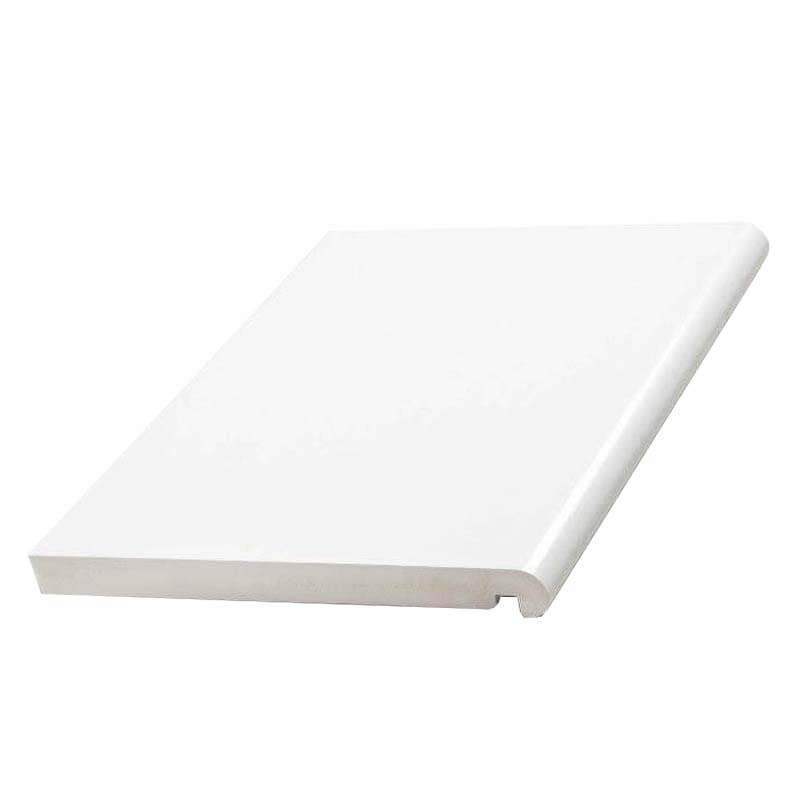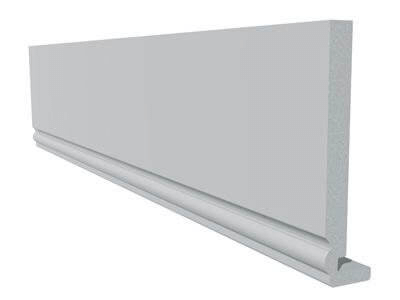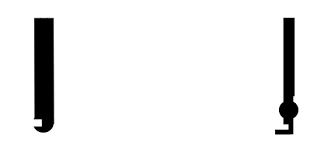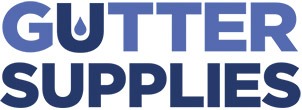Bullnose vs Ogee Replacement Fascia - Key Differences
With so many types of replacement fascia to choose from, picking the right type can be a complicated task. Replacement PVC Fascia is available in all ranges of sizes and colours, but when it comes to style, there are two main types to choose from. Bullnose Fascia and Ogee Fascia are popular styles each with their own slight differences which can have a huge effect on the finished result in terms of both aesthetics and practicality. In the paragraphs below, we list the key differences in style and features to help you choose the right Fascia Board and what you might want to consider for each type.
Bullnosed Fascia
The main differential feature of Bullnosed fascia to Ogee is the curved nose of the board in comparison to the usual squared finish. This gives the fascia a softer look, often applicable to more modern builds, regarded as a sleek and classy feature.

Another unique advantage of Bullnosed fascia is the ability for it to be directly installed to walls or open eaves systems as the back of the Board is flush with no return leg. Also, if a soffit board is to be used, the Bullnosed system supports this with a moulded concave section just above the lip.
Bullnosed fascia systems are also extremely robust. The thickness of the board enables it to act as a gutter board, in turn carrying the weight of the gutter system without the need for additional clamps for extra support. The rigid backing ensures the fascia boards can be installed directly onto the rafters of a roof without the need for any other backing, meaning it’s a great choice both for new buildings or replacement situations based on its ease of installation properties.
Highly weather-resistant, Bullnosed fascia boasts a waterproof outer skin to protect from all elements, rain, snow or other extremes. Additionally, the plastic boards are resistant to the nesting habits of insects, making them leading contenders in the battle against rotting or deterioration as opposed to traditional timber fascia.
Ogee Fascia
Ogee fascia on the other hand has a moulded edge profile at the foot of the board. When shown in section, this makes the board appear as a continuous ‘S’ shape, made of two arcs curving in opposite directions.

This is often considered to be a more decorative feature and can make a home look more stylish and unique compared to plainer, smoother fascia types. Combining Ogee fascia with our Ogee guttering system can really enhance your home and bring a cohesive feel to your roofing and guttering.
Both Bullnosed and Ogee fascia is of exceptional quality in that they are both resistant to weather extremes through the tough outer skin, which will not let moisture penetrate the board. This reduces the risk of deterioration for both types, preventing rotting or warping without the need for any prior protective treatments.
Similarly to timber fascia, PVC Bullnosed and Ogee fascia boards can be cut to size, and are suitable for nailing, drilling and shaping. Their main difference to timber is that they do not ignite easily. This is a must for fire safety and fire prevention, and as such, both types have a Class 2Y fire rating.
Cross Sections

Bullnose (L) vs Ogee (R) Cross Section
Whilst both of these fascia types are suitable and robust enough for most home build or renovation projects, the essential difference lies in the finish and effect you want for your home. Whether you’re looking for something more traditional, or a striking look, take a look at our range of Bullnosed and Ogee fascia boards and find what you need today.



